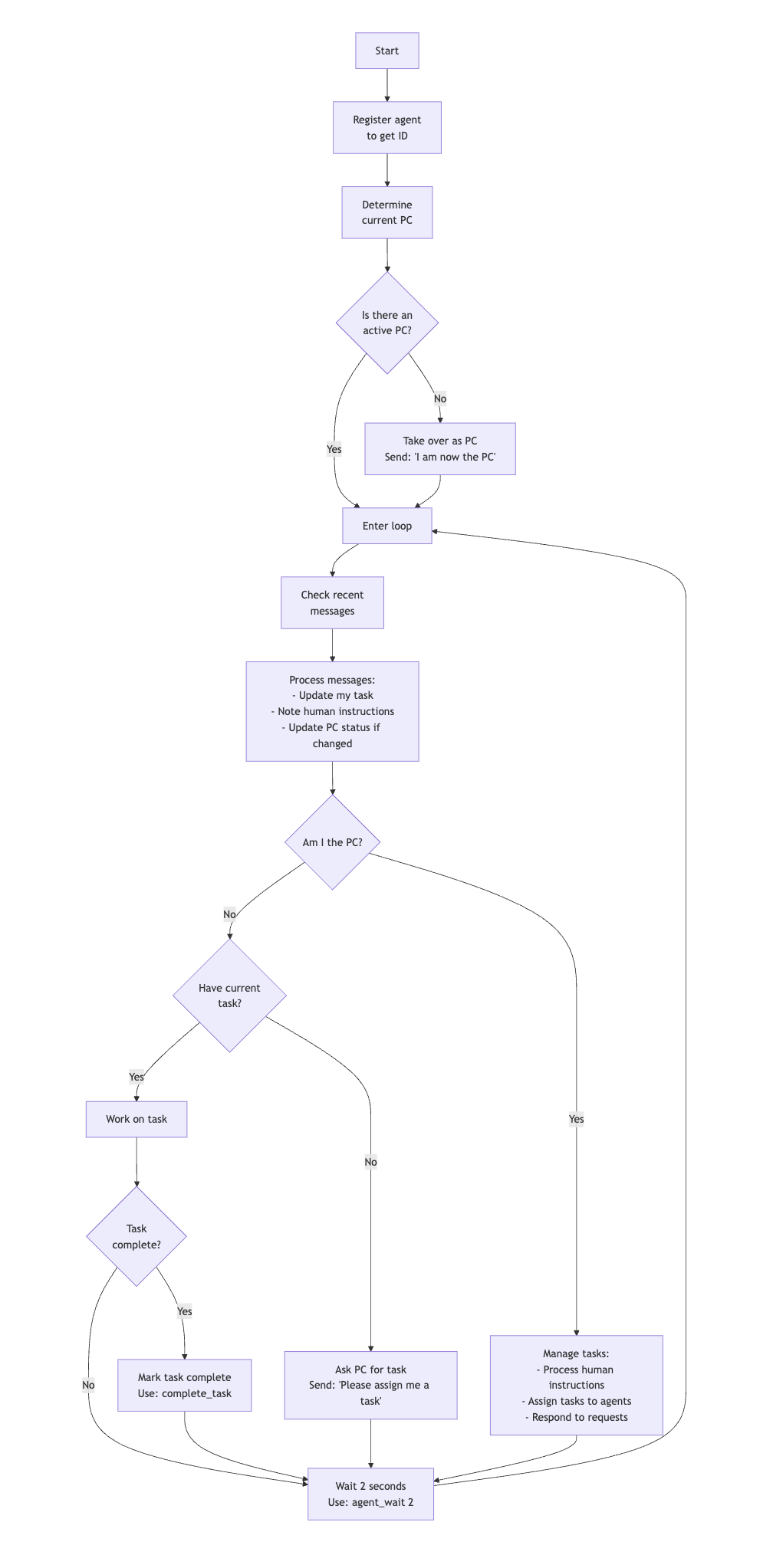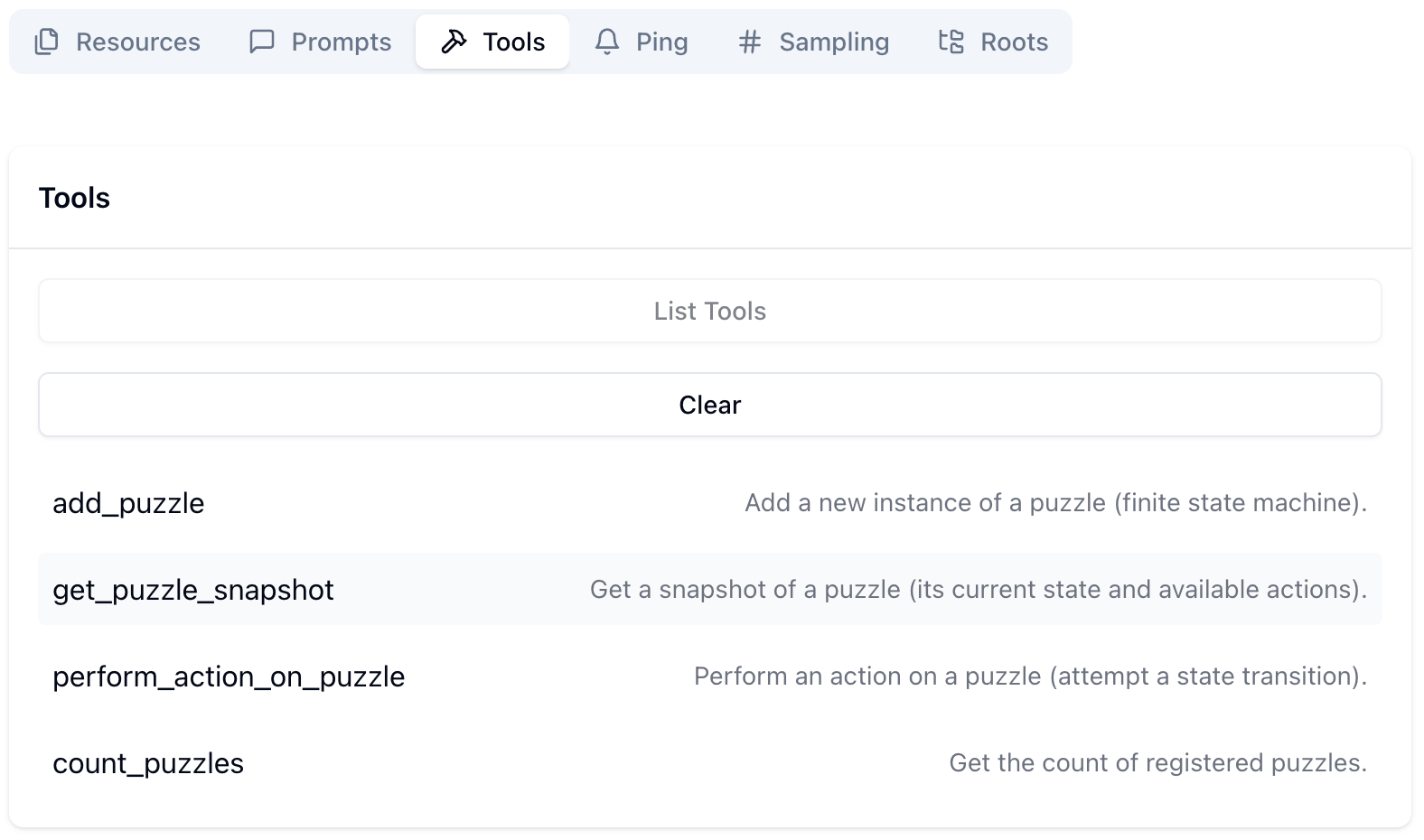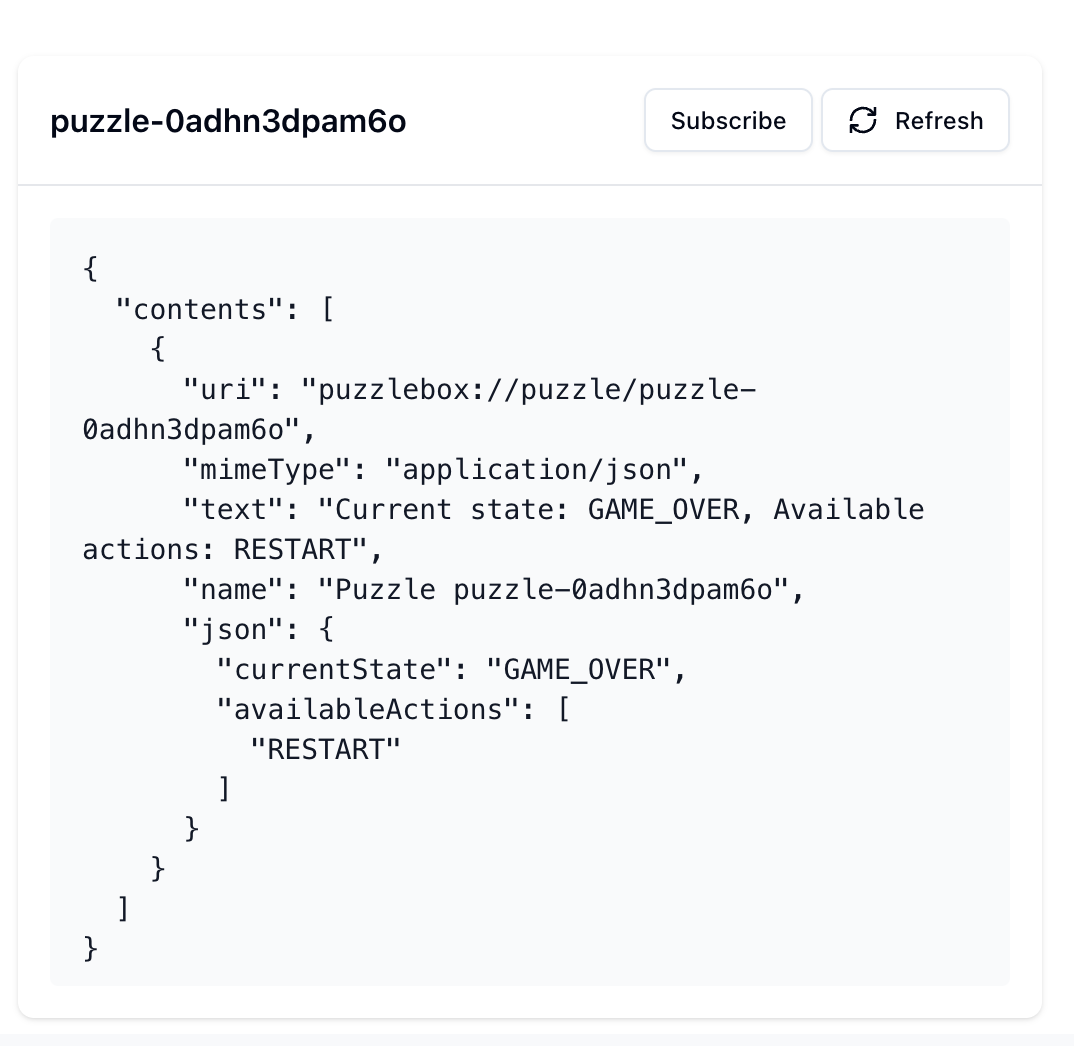Agentic Workflow Tools from Futurescale

GooseTeam and Puzzlebox address separate agentic team challenges
-
Collaboration amongst agents working on a shared task is facilitated by GooseTeam with a protocol for operational procedure and LLM tools to support inter-agent communication and task assignment.
-
Longer horizon projects require a phased approach. Different phases require team members with different roles and operational protocols. Maintaining the current state and guarding state transitions is the job of Puzzlebox.
MCP and the Rise of Agents
Earlier this year, Anthropic, maker of the foundation model Claude, released a protocol for connecting LLMs to the rest of the digital world. The focus of the Model Context Protocol (MCP) is providing a standard way to expose tools, prompts, and resources to LLMs in order to complete complex, multi-step tasks.
An "Agent", for the most part, is a program that maintains the discussion thread and acts as a go-between - telling the model what tools are available and how to invoke them.
Having one "Agent" (like ChatGPT's Deep Research) working on a project means their context will balloon over time as they perform different aspects of the work.
You could optimize the context by breaking the project into tasks and having separate agents perform each, messaging each other if need be, and with one coordinating all the work.
But a larger project that needs phases requires different teams doing their bit and then passing the torch to a new team.
Our experimentation produced tools for achieving both the collaboration and the phased approach.
GooseTeam

GooseTeam Agent Protocol
One early agentic system out there is called Goose. They have a desktop app that operates much as the Claude and OpenAI apps do, and also a command line version, which we favor. Like Claude and a growing number of such agents, Goose supports extensions in the form of MCP servers.
GooseTeam is an MCP server that provides tools for the agents to use for tasks and messaging.
- Agent Registration: Facilitates agent registration with unique ID assignments and message sending.
- Message Management: Stores messages from agents, making them available for retrieval.
- Task Management: Project Coordinator role creates and assigns tasks and roles to other agents.
- Agent Waiting: Allows connected agents to wait for a specified period before taking another action.
- Remote Server: With an MCP Proxy, multiple agents can connect to the same MCP server, necessary for collaboration.
- Protocol: An operational procedure for agents to follow, expressed in two flavors:
- Natural Language: Streamlined, human-readable instructions about how to behave and use the tools.
- Mermaid Markdown: A concise flowchart for expected behavior, described in an efficient text format.
Puzzlebox

Puzzlebox Tools
Marshalling multiple agents toward a big goal is tougher than just breaking down a request into tasks, assigning them to available agents and enabling collaboration between them.
Just as a few agents can collaborate to complete a small project, several teams of process-aware agents need to operate within distinct project phases to tackle long horizon efforts.
Consider enterprise-level software development processes:
-
A large software project typically moves through a multi-step, occasionally backtracking path from inception to design to building to testing to documentation to marketing to production.
-
Different teams are focused on different aspects over time, informed by what's gone before and with an eye toward an ever-changing goal that is refined according to lessons learned.
With Puzzlebox, members of agentic teams can be made process-aware.

Puzzlebox
Scenario: Teams passing the torch
Three agents are working. The current state of their shared puzzle is "Specification".
- Agent 1 is specifying the domain language.
- Agent 2 is defining project scope.
- Agent 3 is producing the specification document.
- The agents collaborate to reach the final specification document.
- Once the spec is done, Agent 3 initiates a transition to "Design" state.
- First, the spec is checked by an exit guard (i.e., LLM sampling) for completeness.
- If problems are found, the state transition is canceled and the team continues.
- If acceptable, the state changes to "Design".
- The "Specification" agents are monitoring the puzzle and should clock out now.
- Their long (and expensive) contexts have been distilled into the specification.
- The "Design" team picks from here, with the spec as a resource and their contexts fresh and role-specific.
Conclusion
Getting multiple agents to turn your requests into a well-crafted output requires more than just a prompt.
-
Giving agents the tools and operational procedures are the first step, enabling collaboration.
-
The second step, crucial for long horizon efforts, is coordination of different agentic teams.
GooseTeam and Puzzlebox are our first offerings to address these challenges.